What are you looking for at Aqrani library?
-
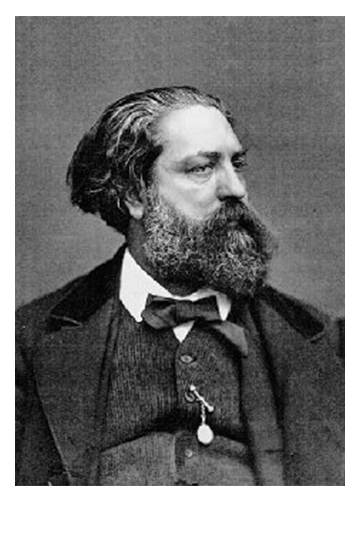
Gustave Aimard
Gustave Aimard (13 September 1818 – 20 June 1883) was the author of numerous books about Latin America and the American frontier.Aimard was born Olivier Aimard in Paris. As he once said, he was the son of two people who were married, "but not to each other". His father, François Sébastiani de la Porta (1775–1851) was a general in Napoleon’s army and one of the ambassadors of the Louis Philippe government. Sébastiani was married to the Duchess de Coigny. In 1806 the couple produced a daughter: Alatrice-Rosalba Fanny. Shortly after her birth the mother died. Fanny was raised by her grandmother, the Duchess de Coigny. According to the New York Times of July 9, 1883, Aimard’s mother was Mme. de Faudoas, married to Anne Jean Marie René de Savary, Duke de Rovigo (1774–1833).Aimard was given as a baby to a family that was paid to raise him. By the age of nine or twelve he was sent off on a herring ship. Later, around 1838, he served for a short while with the French Navy. After one more stay in America (where, according to himself, he was adopted into a Comanche tribe), Aimard returned to Paris in 1847-–the same year his half-sister, Duchess de Choiseul-Pralin, was brutally murdered by her noble husband. Reconciliation with, or acknowledgement by, his biological family did not happen. After having served for a short while at the Garde Mobil Aimard left again for the Americas. This time he was among the 150 miners hired by Duke de Raousset-Boulbon, who wanted to mine in Mexico. However, mining permits were not issued, and the duke decided ‘to free’ the poor people of Mexico. He conquered Hermosillo on 13 October 1852. The duke fell severely ill on the first night of his conquest, and the Hermosillo villagers right away re-took their village. The miners fled and Aimard again returned to France.In 1854 he married Adèle Lucie Damoreau, an ‘artiste lyrique’, and wrote about seventy books, many about them about American Indians. Most of his Indian books were translated into over ten languages. Their reviews mostly deal with the question whether they would harm children or not or whether they are too bloody or not. However, between the lines of his books many autobiographical, anthropological, and historical facts are hidden. Writing about the French-German war, in which his country had been defeated, caused Aimard to lose his readership. His 1852 Mexican adventure is described in Curumilla, the history of the murder of his half-sister Fanny in Te Land en Te Water I & II.In 1870 Aimard and a small army of press people participated in the French-German war in which he booked a modest success (the Bourget-affaire). In 1879 the literary community of Rio de Janeiro hailed him as a hero. Aimard’s travelogue about this journey has never been translated from French.During his stay in Rio de Janeiro he had contact with Emperor Dom Pedro II of Brazil as is apparent from Aimard’s 11 January 1880 letter to Pedro II, which he signed with Gustave Aimard.
-
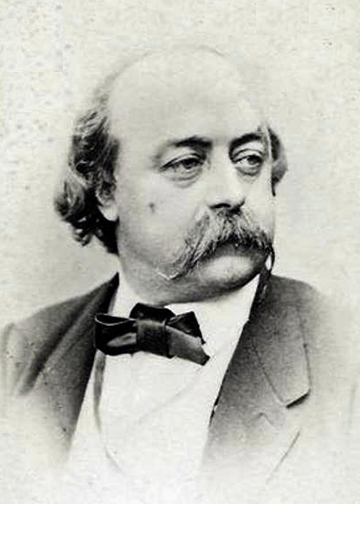
Gustave Flaubert
Gustave Flaubert (12 December 1821 – 8 May 1880) was a French novelist. Highly influential, he has been considered the leading exponent of literary realism in his country. According to the literary theorist Kornelije Kvas, "in Flaubert, realism strives for formal perfection, so the presentation of reality tends to be neutral, emphasizing the values and importance of style as an objective method of presenting reality". He is known especially for his debut novel Madame Bovary (1857), his Correspondence, and his scrupulous devotion to his style and aesthetics. The celebrated short story writer Guy de Maupassant . Flaubert was born in Rouen, in the Seine-Maritime department of Upper Normandy, in northern France. He was the second son of Anne Justine Caroline (née Fleuriot, 1793–1872) and Achille-Cléophas Flaubert (1784–1846), director and senior surgeon of the major hospital in Rouen. He began writing at an early age, as early as eight according to some sources. He was educated at the Lycée Pierre-Corneille in Rouen, and did not leave until 1840, when he went to Paris to study law. In Paris, he was an indifferent student and found the city distasteful. He made a few acquaintances, including Victor Hugo. Toward the end of 1840, he travelled in the Pyrenees and Corsica. In 1846, after an attack of epilepsy, he left Paris and abandoned the study of law.
-
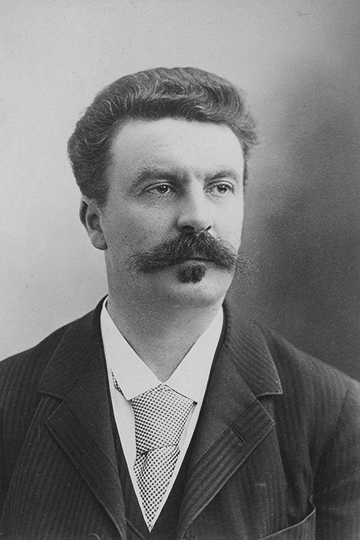
Guy de Maupassant
Henri René Albert Guy de Maupassant (5 August 1850 – 6 July 1893) was a 19th-century French author, remembered as a master of the short story form, and as a representative of the Naturalist school, who depicted human lives and destinies and social forces in disillusioned and often pessimistic terms.Maupassant was a protégé of Gustave Flaubert and his stories are characterized by economy of style and efficient, seemingly effortless dénouements (outcomes). Many are set during the Franco-Prussian War of the 1870s, describing the futility of war and the innocent civilians who, caught up in events beyond their control, are permanently changed by their experiences. He wrote 300 short stories, six novels, three travel books, and one volume of verse. His first published story, "Boule de Suif" ("The Dumpling", 1880), is often considered his masterpiece.
-

Gyp
Sibylle Riquetti de Mirabeau, Comtesse de Martel de Janville (16 August 1849 – 28 June 1932) was a French writer who wrote under the pseudonym Gyp.She was born at the château de Coëtsal near Plumergat, in the département of the Morbihan, in Brittany, her father, Joseph-Arundel de Riquetti, comte de Mirabeau, 1820–1860, being the great-grandson of Victor de Riquetti, marquis de Mirabeau (Mirabeau Père), noted 18th-century economist, and grandnephew of Honoré Mirabeau the celebrated revolutionary orator. In view of her later opinions, Gyp, self-styled "last of the Mirabeaus", died at Neuilly-sur-Seine on 28 June 1932.
-
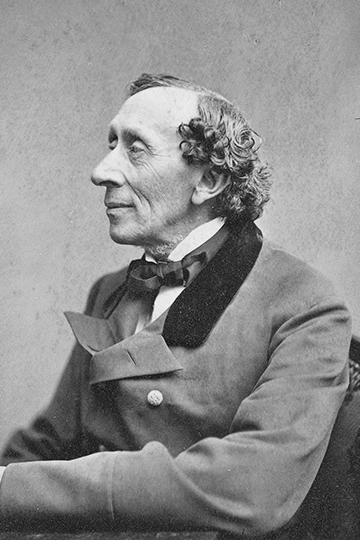
Hans Christian Andersen
Hans Christian Andersen (2 April 1805 – 4 August 1875), in Denmark usually called H.C. Andersen, was a Danish author. Although a prolific writer of plays, travelogues, novels, and poems, he is best remembered for his fairy tales.Andersen's fairy tales, consisting of 156 stories across nine volumes and translated into more than 125 languages, have become culturally embedded in the West's collective consciousness, readily accessible to children, but presenting lessons of virtue and resilience in the face of adversity for mature readers as well. His most famous fairy tales include "The Emperor's New Clothes," "The Little Mermaid," "The Nightingale," "The Steadfast Tin Soldier", "The Red Shoes", "The Princess and the Pea," "The Snow Queen," "The Ugly Duckling," "The Little Match Girl," and "Thumbelina." His stories have inspired ballets, plays, and animated and live-action films. One of Copenhagen's widest and busiest boulevards, skirting Copenhagen City Hall Square at the corner of which Andersen's larger-than-life bronze statue sits, is named "H. C. Andersens Boulevard."
-
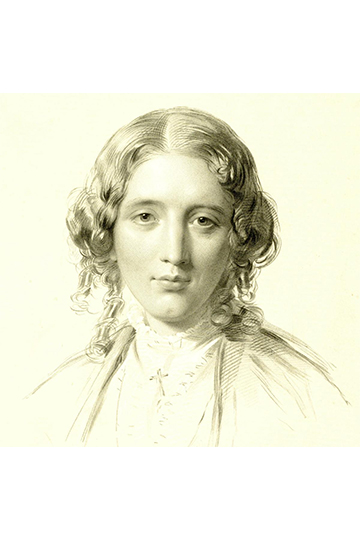
Harriet Beecher Stowe
Harriet Elisabeth Beecher Stowe (June 14, 1811 – July 1, 1896) was an American abolitionist and author. She came from the Beecher family, a famous religious family, and is best known for her novel Uncle Tom's Cabin (1852), which depicts the harsh conditions for enslaved African Americans. The book reached millions as a novel and play, and became influential in the United States and Great Britain, energizing anti-slavery forces in the American North, while provoking widespread anger in the South. Stowe wrote 30 books, including novels, three travel memoirs, and collections of articles and letters. She was influential for both her writings and her public stances and debates on social issues of the day.
-

Heinrich von Kleist
Bernd Heinrich Wilhelm von Kleist (18 October 1777 – 21 November 1811) was a German poet, dramatist, novelist, short story writer and journalist. His best known works are the theatre plays Das Käthchen von Heilbronn, The Broken Jug, Amphitryon, Penthesilea and the novellas Michael Kohlhaas and The Marquise of O. Kleist committed suicide together with a close female friend who was terminally ill.The Kleist Prize, a prestigious prize for German literature, is named after him, as was the Kleist Theater in his birthplace Frankfurt an der Oder. Kleist was born into the von Kleist family in Frankfurt an der Oder in the Margraviate of Brandenburg. After a scanty education, he entered the Prussian Army in 1792, served in the Rhine campaign of 1796, and retired from the service in 1799 with the rank of lieutenant. He studied law and philosophy at the Viadrina University and in 1800 received a subordinate post in the Ministry of Finance at Berlin.
-

Henri Barbusse
Henri Barbusse (May 17, 1873 – August 30, 1935) was a French novelist and a member of the French Communist Party. He was a lifelong friend of Albert Einstein. The son of a French father and an English mother, Barbusse was born in Asnières-sur-Seine, France in 1873. Although he grew up in a small town, he left for Paris in 1889, at age 16. In 1914, at age 41, he enlisted in the French Army and served on the western front during World War I. Invalided out of the army three times, Barbusse would serve in the war for 17 months, until November 1915, when he was permanently moved into a clerical position due to pulmonary damage, exhaustion, and dysentery. On 8 June 1915, he is awarded the Croix de guerre with citation. He was reformed on 1st June 1917. Barbusse first came to fame with the publication of his novel Le Feu (translated by William Fitzwater Wray as Under Fire) in 1916, which was based on his experiences during World War I. By this time, Barbusse had become a pacifist, and his writing demonstrated his growing hatred of militarism. Le Feu drew criticism at the time for its harsh naturalism, but won the Prix Goncourt in December 1916.
-

Henri Beauclair
Henri Eugène Amédée Beauclair (December 21, 1860 at Lisieux – May 11, 1919 in Paris) was a French poet, novelist, and journalist. He was the chief editor of the daily newspaper Le Petit Journal from 1906 to 1914. He worked for a number of publications, including Lutèce, Le Chat noir, Le Procope, journal parlé (1893–1898), and Le Sagittaire, a monthly revue of art and literature (1900–1901).He had a taste and an unquestionable talent for satire and pastiche. He collaborated with poet Gabriel Vicaire, with whom he wrote the famous Déliquescences of Adoré Floupette (1885), a parody of the Decadent movement in poetry which caused several months of vigorous debate within Parisian literary circles.
-
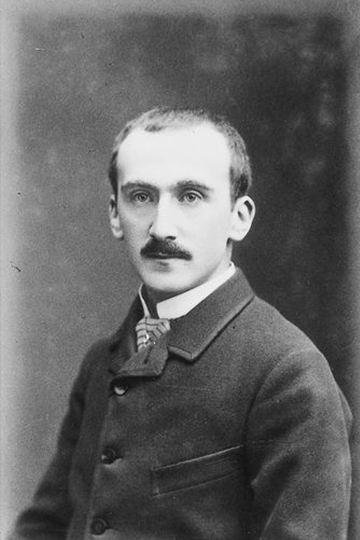
Henri Bergson
Henri-Louis Bergson (18 October 1859 – 4 January 1941) was a French philosopher of Jewish descent who was influential in the tradition of continental philosophy, especially during the first half of the 20th century until the Second World War. Bergson is known for his arguments that processes of immediate experience and intuition are more significant than abstract rationalism and science for understanding reality.He was awarded the 1927 Nobel Prize in Literature "in recognition of his rich and vitalizing ideas and the brilliant skill with which they have been presented". In 1930 France awarded him its highest honour, the Grand-Croix de la Legion d'honneur.Bergson's great popularity created a controversy in France where his views were seen as opposing the secular and scientific attitude adopted by the Republic's officials.